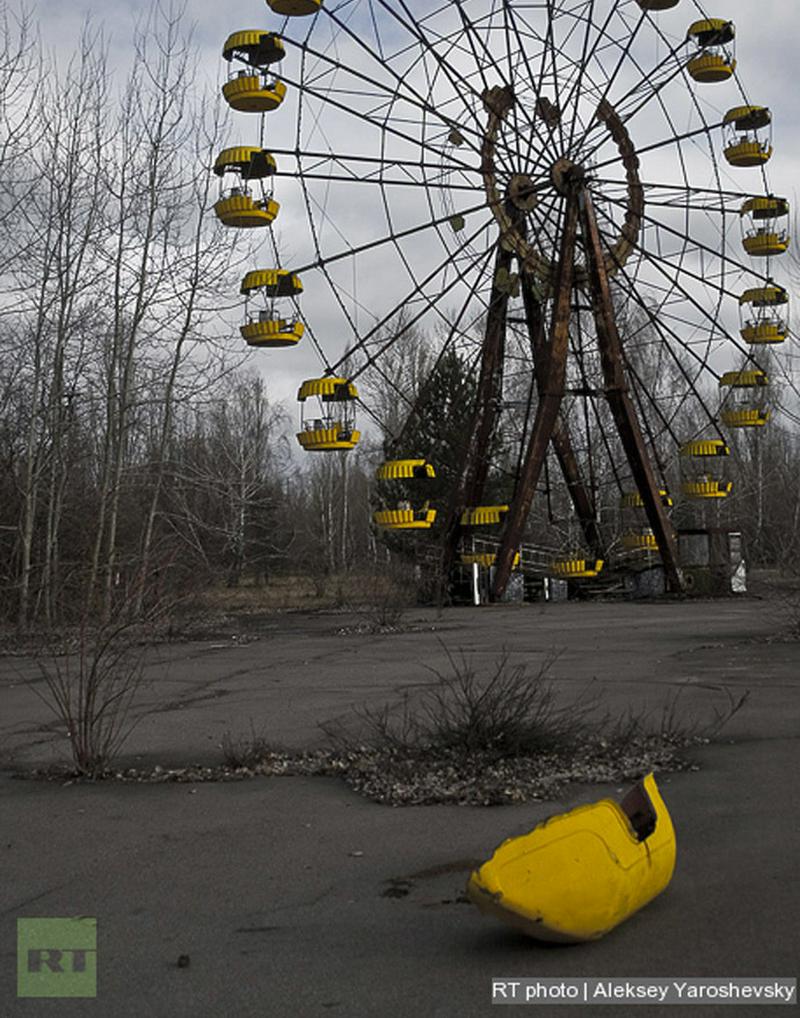Chernobyl: Then And Now
By | February 25, 2017

The Chernobyl Disaster or more commonly known simply as Chernobyl, is one of the most infamous nuclear disasters ever to occur. Located in Pripyat, part of the now defunct Ukrainian Soviet Socialist Republic (1919 to 1996) the Chernobyl Nuclear Power Plant was effectively the centre of Pripyat.
The city itself, was established in 1970 (but declared a city in 1979) as a nuclear city whose main function was serving and sustaining the nuclear power plant by supplying it with a workforce, as well as amenities needed to maintain life as normal. According to statistics, the population was just shy of 50,000 persons and contained primary, secondary and tertiary level education facilities which could satisfy the demands of the growing community. Pripyat also contained healthcare facilities, avenues for business, recreation and sports and modes of transportation and telecommunication.
However, on Saturday 26th April, 1986, a seemingly routine and necessary system test would derail the budding city. The aim of the test was to determine if the reactors could withstand the loss in primary power by way of their underpowered turbines powering the core’s cooling mechanism till the secondary source was realized. The test proved to be disastrous and monumentally unsuccessful as a myriad of miscalculations directly preceded the test such as the extended delay between primary power loss and secondary power initiation.
Usually, the lapse between the two should be anywhere from 10 to 15 seconds, however, the lag was between 60 to 75 seconds long. That, coupled with the gross disregard for standardised safety and operational procedures left the plant susceptible to a disaster at any time. As heated steam from the uncooled core came into contact with water, this caused as explosion which triggered the burning of graphite, along with other chemically induced explosions which further aided in the dispersal of harmful particles. The immediate effect of this disaster was the death of 2 plant personnel and 29 responding firemen.
Many others died between 1 to 4 weeks after the accident due to radiation poisoning or acute radiation sickness. The entire populace of Pripyat and up to 10 kilometres of the explosion zone had to be evacuated. The evacuation zone was increased to 30 kilometres due to the settlement of particles far outside the original evacuation zone.
Entire towns, developments and infrastructure now lay wasted due to the exceedingly high levels of radiation which still exist today. To this day countries such as Belarus, Ukraine and Russia have programs which support citizens affected by the plethora of resulting diseases and cancers. The environmental repercussions meant that entire species of flora and fauna have been contaminated with high levels of elements such as caesium, strontium and americium, which take significant amounts of time to decay and dissolve.
Many animals who withstood the radioactive levels produced highly mutated offspring which did not survive, some plants as well had changes in their chemical structures and began to lose key characteristics and eventually die out. There exists are stark difference between the once bustling city and the ghost town which exists today. A far cry from its former self, Chernobyl has yet to fully recover from the monumental disaster which has now become synonymous with its name.


